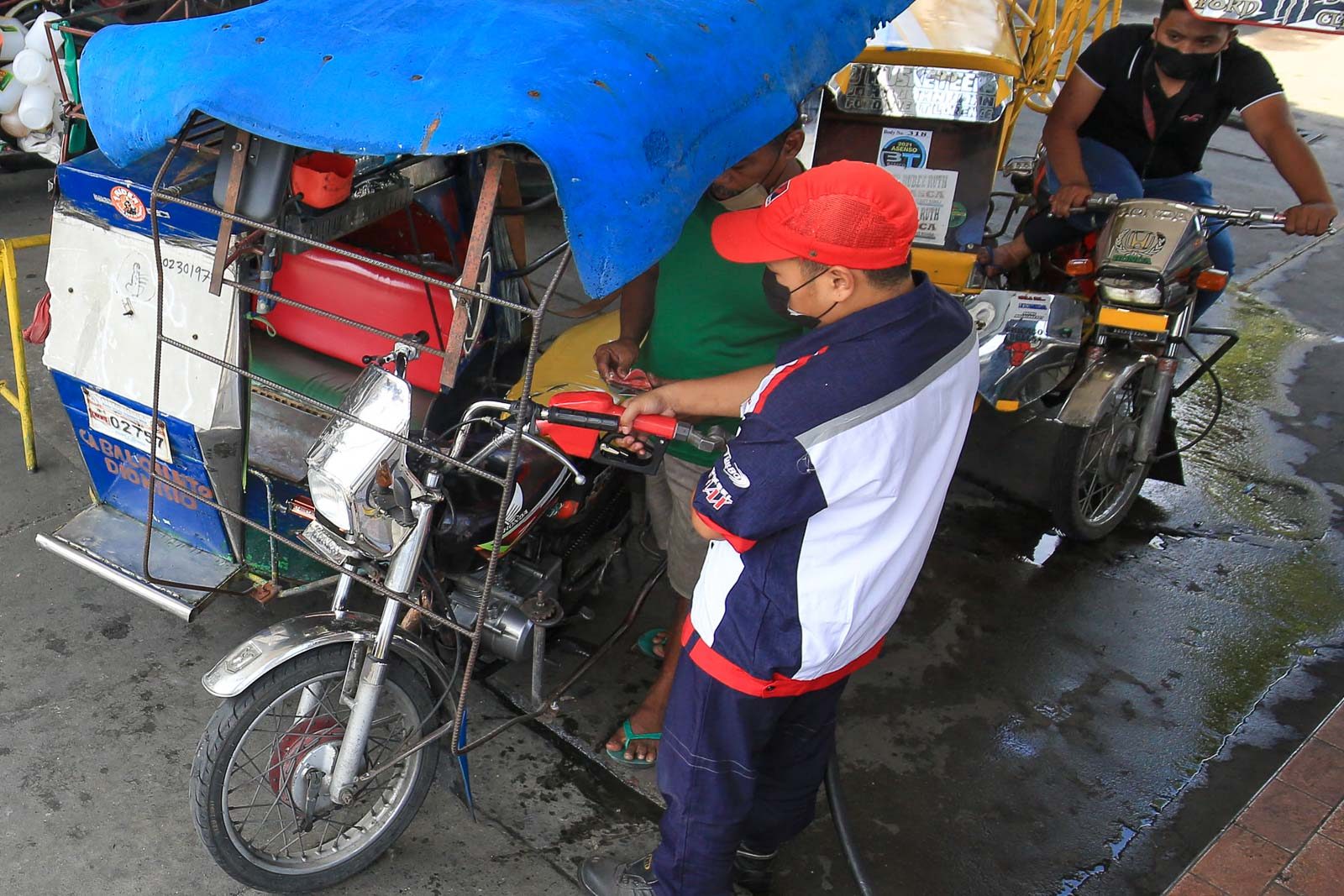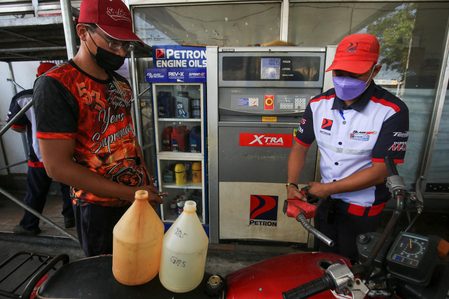SUMMARY
This is AI generated summarization, which may have errors. For context, always refer to the full article.

MANILA, Philippines – The rate of increase in prices of goods in the Philippines jumped to the top end of the government’s target band as Russia’s attack on Ukraine sent oil and commodity prices soaring.
The Philippine Statistics Authority on Tuesday, April 5, reported that inflation rose to 4% in March, higher than the 3% recorded in the first two months of 2022.
Year-to-date, inflation is averaging at 3.4%.
Skyrocketing oil prices are to blame, as pump prices rose for 11 straight weeks until late March. Higher transport costs, as expected, rippled through other commodities.
Food inflation jumped to 2.6%, driven mainly by meat (2.9%) and fish and seafood (4.3%).
Electricity costs shot up 18%, while liquefied petroleum gas surged 26.5%.
Transport inflation hit 10.3%, driven by gasoline and diesel prices jumping by 36.7% and 58%, respectively.
Main sources of acceleration of inflation in March. Food inflation rises 2.6%, electricity up 18%, LPG up 26.5%, transport up 10.3%, diesel up 58% pic.twitter.com/9fUkYydD4P
— Ralf Rivas (@RalfRivas) April 5, 2022
Inflation in Metro Manila went up to 3.4% in March from 1.9% in February. In areas outside the capital region, inflation rose to 4.1% from 3.4%.
Eastern Visayas posts highest inflation rate at 5.3%, BARMM posts lowest at 1.5% pic.twitter.com/xPfkYLiWaa
— Ralf Rivas (@RalfRivas) April 5, 2022
Intervention
The government has distributed fuel vouchers to public utility vehicle drivers to somewhat dampen the impact.
Aside from fuel subsidies, the Philippine government’s economic team is looking at improving the supply of goods through tariff reductions and imports, as well as further opening up the economy to cool down inflation.
“We have been proactively monitoring the impact of the Russia-Ukraine conflict. As early as March 7, the Economic Development Cluster (EDC) has already proposed interventions to manage the impact on the economy and the people,” said Socioeconomic Planning Secretary Karl Chua.
Among the interventions the EDC proposed are:
1. Expanding supply and reducing prices of pork by extending the lower tariff of 15% in-quota and 25% out-quota with minimum access volume of 200,000 metric tons until December 2022
2. Accelerating the release of imported pork from cold storage
3. Passing the proposed livestock development and competitiveness law and pursuing livestock value chain reform to address rising corn and feeds prices
4. Accelerating the release of sanitary and phytosanitary import clearances from the National Meat Inspection Service’s cold storage warehouses to push up chicken inventory
5. Removing all non-tariff barriers
The Bangko Sentral ng Pilipinas has raised its inflation forecast for 2022 from 3.4% to 3.7% and maintained the 2% to 4% target for the year. – Rappler.com
Add a comment
How does this make you feel?

![[In This Economy] Is the Philippines quietly getting richer?](https://www.rappler.com/tachyon/2024/04/20240426-Philippines-quietly-getting-richer.jpg?resize=257%2C257&crop=194px%2C0px%2C720px%2C720px)
![[In This Economy] A counter-rejoinder in the economic charter change debate](https://www.rappler.com/tachyon/2024/04/TL-counter-rejoinder-apr-20-2024.jpg?resize=257%2C257&crop=267px%2C0px%2C720px%2C720px)
![[Vantage Point] Joey Salceda says 8% GDP growth attainable](https://www.rappler.com/tachyon/2024/04/tl-salceda-gdp-growth-04192024.jpg?resize=257%2C257&crop_strategy=attention)
![[ANALYSIS] A new advocacy in race to financial literacy](https://www.rappler.com/tachyon/2024/04/advocacy-race-financial-literacy-April-19-2024.jpg?resize=257%2C257&crop_strategy=attention)

There are no comments yet. Add your comment to start the conversation.